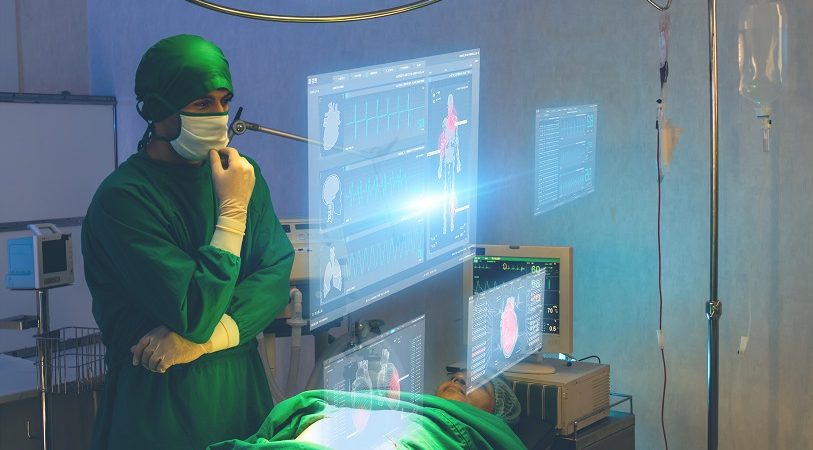The São Paulo State Cancer Institute has hosted groundbreaking Proof of Concept (PoC) surgery – the first of its kind to utilize a fifth-generation connection in a public hospital in Brazil.
G technology will allow significant advancements in various areas, including healthcare.
It was employed at São Paulo State Cancer Institute (Icesp, in Portuguese) thanks to a collaboration program between Claro, Embratel, Ericsson, NUT and Hospital das Clínicas Innovation Center (InovaHC), enabling surgery with real-time transmission.
Marco Bego, Director, InovaHC, said: “The results of the Proof of Concept support our initial expectations regarding the project, its potential and impact. We understand that the role of InovaHC and its partnerships is to strengthen the innovation ecosystem to expand access to healthcare in Brazil.”
The procedure, which began testing in April 2022, was the first Proof of Concept (PoC) and consisted of integrating the surgical patient monitoring information into a database, allowing for remote monitoring and evaluation by the medical team. The agents could evaluate latency, speed, stability, quality and security, among other items, by transmitting and demonstrating data via 5G technology.
Ricardo Abdalla, Assistant Surgeon of Digestive System Surgery, Icesp, said: “During the PoC, the anesthesia machine measured the critical signs during the procedure. Therefore, with the patient anesthetized, we could compare the stability and efficiency of data transmission in the traditional way versus 5G. We had a satisfactory result. It was possible to observe the data transmission at a faster and more efficient pace with quality, which ensures that we can think about possible next steps of the project that may include, for example, tests with the transmission of other types of data or surgery videos.”
During the experiment, sending data from the Internet (Wi-Fi connection) of hospitals was compared with sending data using the 5G signal, implemented on-site by Claro at the 3.5GHz frequency in a test license granted by the National Telecommunications Agency (Anatel, in Portuguese). A tenfold capacity increase happened from 5G compared to a conventional Wi-Fi connection.
Thiago Paulmier, CEO, NUT, said: “In practical terms, this means that during the surgical procedure, a greater amount of information related to the patient clinical situation and the procedure itself could be transmitted in real-time without losses, enabling more effective monitoring by the healthcare team.
“Another data point worth mentioning is the scenario of data sending effectiveness: with the PoC, we were able to evaluate that, with the Wi-Fi connection, there were several attempts to resend packets, which means that the data packets could not be sent completely, while with the use of 5G, there was no interruption. This has a positive impact, as it ensures that all the collected data is delivered to the clinical team faster, in real-time, without gaps.”
The entire experience was also only possible with the installation of appropriate equipment, the integration of solutions and the activation of digital infrastructure by the project partners: Ericsson and Embratel.
Murilo Barbosa, Business VP, Ericsson, said: “Ericsson offers its clients and partners a set of leading high-tech solutions and an unparalleled experience to support their business goals.
“In this project which partners with Claro and Embratel, we installed a high-tech 5G network infrastructure at Icesp to ensure maximum efficiency and security in procedures. The fifth generation of mobile connectivity in its standalone version (5GSA) opens up unique opportunities to improve patient safety and healthcare.
“We have seen that 5G has high potential to transform emergency care response, as well as address critical needs that require data delivery within a specified timeframe with the necessary levels of reliability.”
Maria Teresa Lima, Executive Director, Embratel for the Government, said: “The PoC conducted proves the window of opportunities that 5G opens up for the healthcare industry, both in new forms of operation and in innovations. From the PoC, we can imagine numerous benefits for patients such as access to various specialists working precisely in the same procedure, even if they are not in the operating room.
“Collaboration between doctors will be facilitated and help democratize access to cutting-edge health as it becomes more decentralized and reaches more remote locations. Embratel is very excited to evolve in this partnership with new test fronts to continue discovering the full potential of using 5G in the sector.”
With the arrival and popularization of the 5G network, there is expected to be a scientific leap in the medical field as remote surgeries can become much more common and care for remote and vulnerable communities can be expanded and improved in quality.
Furthermore, optimizing surgical centers and integrating technologies will allow for more safety and quality in surgeries and the development of new distance support and education services.
Regarding the healthcare market, the variety of solutions that 5G will enable is gigantic. Not only are the various players, such as hospitals, laboratories, operators and insurance companies, moving at a breakneck pace in digitalization, but sensor data in accessories and clothing will also be increasingly present.
Rodrigo Duclos, Innovation Director and founder of beOn Claro, said: “It will be possible to create apps with prediction algorithms that use data from the health system combined with personal sensor data. This scenario will enable unprecedented monitoring, treatment, and support with costs and accuracy. The beOn Claro has the ambition to play a relevant role in building this future, collaborating with HC and leveraging health techs.”



